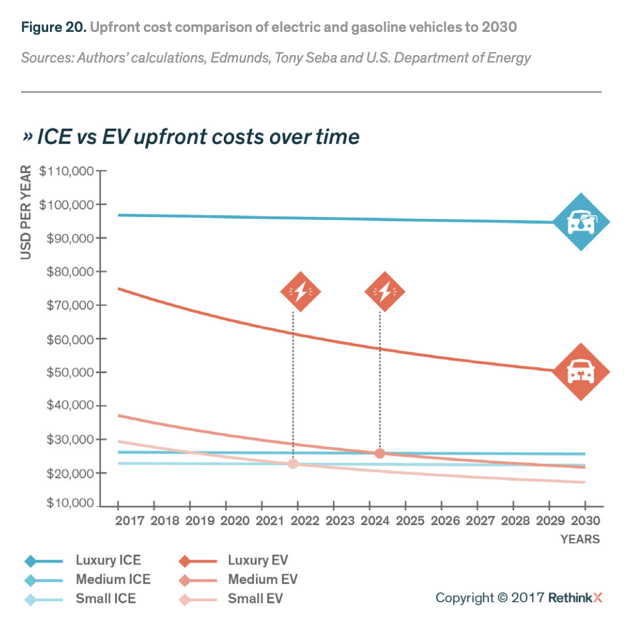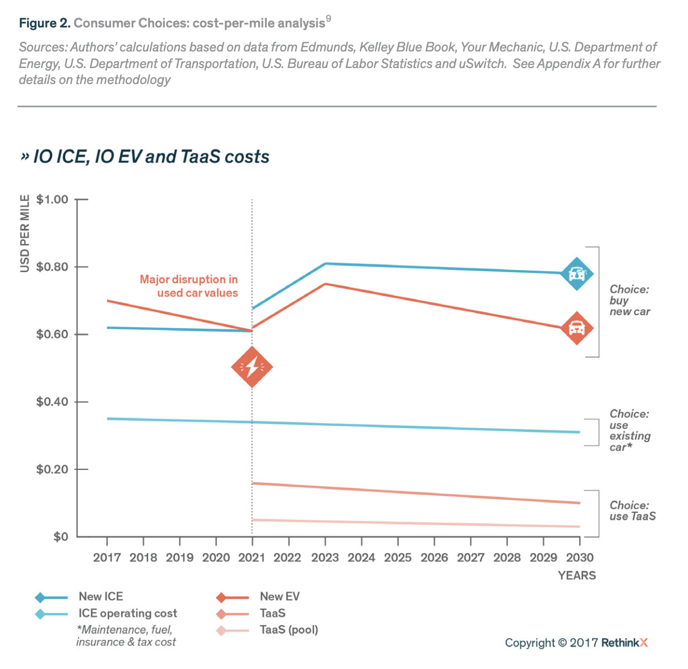False. Electric vehicle (EV) costs are declining consistently over time as market adoption grows exponentially, following a typical industry experience curve.
Our current trajectory places EVs on target to pass cost parity in terms of total lifetime vehicle cost in most regions by the mid-2020s. In some regions (such as China) cost parity has already been reached.
Explore the evidence...

- Autonomous EVs (A-EVs) last five to seven times longer than the average human-driven car, so ride-sharing services and fleets will adopt A-EVs for purely economic reasons. Ride-sharing services, like Uber, will convert to EVs simply because it is the more economically viable thing to do. Watch RethinkX co-founder Tony Seba discuss the two stages—transition to EVs, and then to A-EVs—in more detail here.
- In our 2017 report, we predicted that a 40% yearly improvement rate of A-EVs (slightly slower than Moore’s law) means that A-EVs will be five times safer than human-driven vehicles by 2020, and 10 times safer by 2022. Not only are robotaxi's more economically viable, but they are safer...
Why are fleet-driven robotaxis used through TaaS cheaper than individually owned cars?

Witness the transformation
The disruption of transportation will be led by the rise of TaaS. TaaS will become progressively cheaper and improve its functionality, while combustion vehicles will become ever more expensive to operate and harder to use.
Learn more about the transportation disruption.
Published on: 12/07/23

